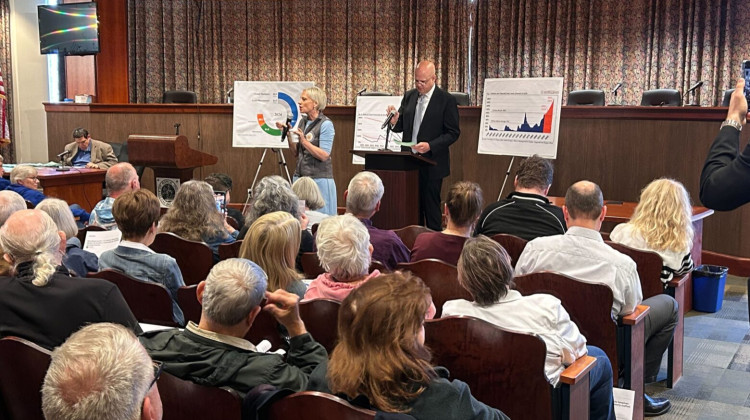
The Tippecanoe darter is one of the smallest fish in Indiana, getting upt to just an inch and a half long.
Robert Criswell/U.S. Fish and Wildlife ServiceThe U.S. Fish and Wildlife Service says a tiny fish named after an Indiana river doesn’t need federal protection. In fact, the Tippecanoe darter’s numbers might be growing.
The agency completed a scientific review of the species after environmental groups wanted it listed under the Endangered Species Act.
The Tippecanoe darter is an orange fish with black stripes that only grows to less than an inch and a half long. It’s hard to see — not only because it’s small, but it also likes to live in loose rocks at the bottom of big rivers.
Twenty years ago, the darter was considered an endangered species in the state. But that was before the Indiana Department of Natural Resources found a better way of surveying the tiny fish.
Brant Fisher is a non-game aquatic biologist with DNR’s Division of Fish and Wildlife. He says in regular fish surveys, the DNR might use boat electrofishing equipment to shock fish in a stream, temporarily paralyzing them so they can be counted.
But Fisher says when you're standing in a boat, it's not always so easy to see the tiny Tippecanoe darter.
“They were probably there, they just weren’t seeing them,” he says.
Now, Fisher says the DNR puts a small net in the loose rocks where the darter lives and overturns the rocks, coaxing the darter into a the net.

Since trying this new method, Fisher says the Tippecanoe darter has been found in places it wasn’t before and in healthy numbers. He says surveys suggest it also might be growing — likely due to better water quality in Indiana’s streams.
Fisher says, because of the Tippecanoe darter's unique habitat, having clean water that doesn't contain an excess of sediment is key. He says likely reduced runoff from farm fields has helped the darter.
“Some of these cover crop practices they’re doing now, is probably helping a lot as far as reducing sediments and stuff into the stream,” Fisher says.
READ MORE: Federal Proposal Could Harm Threatened Species In Indiana
Indiana Environmental reporting is supported by the Environmental Resilience Institute, an Indiana University Grand Challenge project developing Indiana-specific projections and informed responses to problems of environmental change.
 DONATE
DONATE







 Support WFYI. We can't do it without you.
Support WFYI. We can't do it without you.